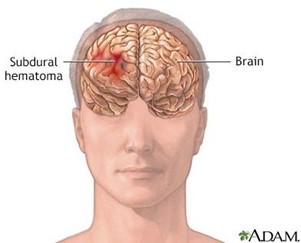Which behaviour suggests appropriate psychosocial development in the adolescent?
The adolescent is self-absorbed and self-centred and has sudden mood swings.
Adolescents move from peers and enjoy spending time with family members.
The adolescent seeks validation for socially acceptable behaviour from older adults.
Conformity with the peer group increases in late adolescence.
The Correct Answer is B
During this stage, adolescents typically experience a shift from a primary focus on family to
an increased emphasis on peer relationships. However, it is still important for adolescents to
maintain a connection with their family and enjoy spending time with family members. This
behaviour indicates a healthy balance between peer interactions and maintaining positive
relationships with family.
The adolescent is self -absorbed and self-centred and has sudden mood swings in (option A)
is incorrect because it describes behaviours associated with emotional and psychological
challenges commonly seen in adolescence but does not indicate appropriate psychosocial
development.
The adolescent seeks validation for socially acceptable behaviour from older adults in (option
C) is incorrect because seeking validation for socially acceptable behaviour from older adults,
may indicate a lack of autonomy and difficulty in developing a sense of personal identity,
which is important for healthy psychosocial development in adolescence.
Conformity with the peer group increases in late adolescence in (Option D) is incorrect
because stating that conformity with the peer group increases in late adolescence, is not
entirely accurate. While peer influence is significant during adolescence, there is also a
growing emphasis on individuality and the development of one's own identity. Adolescents
may experience a balance between conforming to certain aspects of their peer group and
asserting their unique traits and interests.
Nursing Test Bank
Naxlex Comprehensive Predictor Exams
Related Questions
Correct Answer is A
Explanation
A subdural hematoma is a type of intracranial bleeding that occurs between the dura mater (the
outermost layer of the meninges) and the skull. The dura mater is a tough membrane that covers
and protects the brain. When a subdural hematoma occurs, blood collects between the dura mater
and the skull, resulting in increased pressure on the brain.
Bleeding is generally arterial, and brain compression occurs rapidly in (Option B) is incorrect because
while bleeding in a subdural hematoma can be arterial, it can also be venous. The rate of bleeding
and brain compression can vary depending on the size and severity of the hematoma.
Bleeding occurs between the dura and the cerebrum in (Option C) is incorrect because the bleeding
in a subdural hematoma does not occur between the dura and the cerebrum (the largest part of the
brain). It specifically occurs between the dura and the skull.
The hematoma commonly occurs in the pretemporal region in (Option D) is incorrect because the
location of a subdural hematoma can vary. While pretemporal region is a possible location, subdural
hematomas can occur in different areas of the brain, depending on the site of injury.

Correct Answer is C
Explanation
Celiac disease is an autoimmune disorder triggered by the ingestion of gluten, a protein found in wheat, barley, and rye. It causes damage to the lining of the small intestine, leading to malabsorption of nutrients. The characteristic symptoms of celiac disease include abdominal distention, underweight or failure to thrive, thin arms and legs, and foul-smelling stools.
intussusception in (option A) is incorrect because it, refers to a condition where a portion of the intestine telescopes into an adjacent section, causing an obstruction. While intussusception can present with symptoms such as abdominal pain, vomiting, and currant jelly-like stools, it is not typically associated with failure to thrive.
imperforate anus, in (option B) is incorrect because it is a congenital condition in which the opening of the anus is blocked or absent. It can cause difficulties with passing stools, but it is not typically associated with failure to thrive or the specific assessment findings described.
irritable bowel syndrome (IBS) in (option D) is incorrect because it, is a chronic disorder of the gastrointestinal tract characterized by recurrent abdominal pain, changes in bowel habits, and bloating. While IBS can cause gastrointestinal symptoms, it is not typically associated with failure to thrive, underweight, or the specific assessment findings mentioned.

Whether you are a student looking to ace your exams or a practicing nurse seeking to enhance your expertise , our nursing education contents will empower you with the confidence and competence to make a difference in the lives of patients and become a respected leader in the healthcare field.
Visit Naxlex, invest in your future and unlock endless possibilities with our unparalleled nursing education contents today
Report Wrong Answer on the Current Question
Do you disagree with the answer? If yes, what is your expected answer? Explain.
Kindly be descriptive with the issue you are facing.
